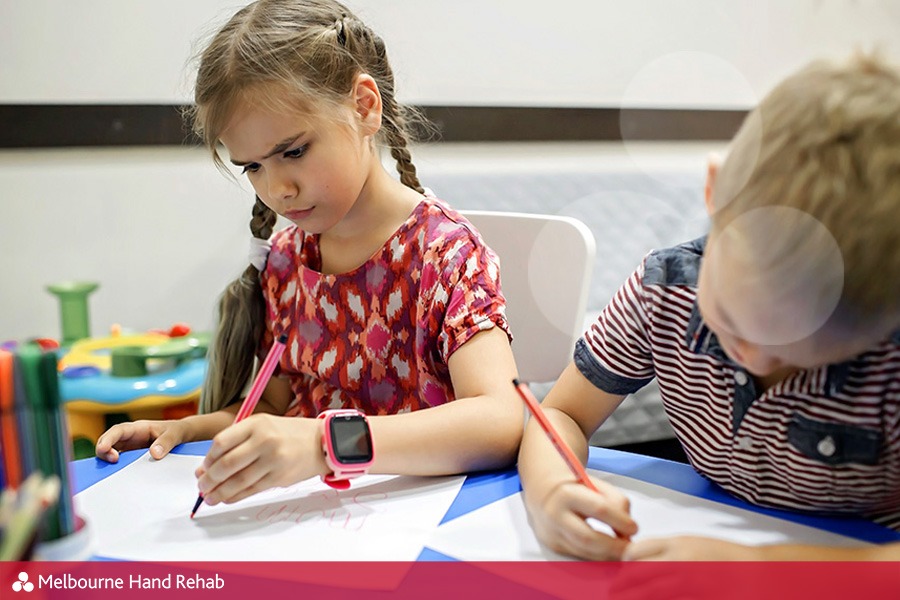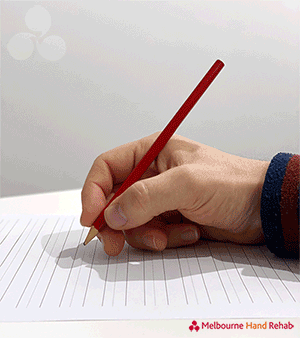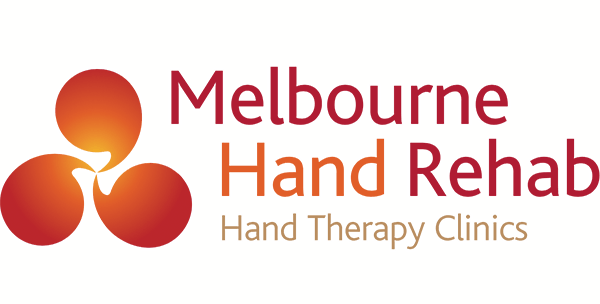
31 Aug Handwriting
How hand therapy can assist with handwriting skills
Handwriting is a skill that every child learns to develop from a very early age. Starting with general curiosity of making marks on a page, developing skills to draw simple shapes, then faces, then their names, and so on. It is a skill we all use in everyday life, and a complex one at that. Handwriting is a multifaceted activity that utilises both fine and gross motor skills as one.
Some children will experience difficulties with handwriting during their primary and secondary school years. This can affect a child’s emotional, social, and physical wellbeing. Difficulties with handwriting may also disrupt learning at school.
To be able to write you need to be able to:
- Hold a pen in a functional grip
- Have good movement in the fingers, wrist, elbow and shoulder
- Have a strong stable core
- Coordinate all these together to make markings on a page that can be read with ease
At Melbourne Hand Rehab we do a variety of assessments for someone struggling with their handwriting. As you would expect, we look at speed, legibility, letter formation, pen pressure, and pen grasp. However, we also assess seating, posture, core strength, and fine and gross motor skills.
Let’s break these down to see how they impact handwriting.
Pen Grip
There are many ways to hold a pen that can be condensed down to two different categories of grip, functional and non-functional. A functional pen grip is one that allows controlled movement of a pen without the need to grip too hard, requires adequate pen pressure, and does not cause fatigue in the arms and hands after writing. A non-functional pen grip is exactly the opposite, sore hands, hand pressure, poor movement.

Range of motion
Fingers, wrist, and shoulders should all work together like a well oil machine when it comes to hand writing. If one isn’t moving as freely as the rest, then compensation occurs, putting more stress on the working areas, thus causing pain, fatigue, poor word and letter spacing, and pen pressure that’s too hard or too light.
Core strength
One of the most common positions to write in is in a seated position, which requires core stability. Kids with lower core stability are likely to slump at a desk, rest their body or head on the table while writing (that was 100% me at school). Poor posture closes the body, and does not allow free movement of the arm, and they end up using more fingers than anything else, leading to that fatigue, and illegible handwriting (I can personally attest to that).
Fine and Gross motor skills
We look at gross motor skills as it attributes to core strength and posture. We use gross motor and core strengthening exercises to engage the body, waking up the muscles and getting you ready to focus on the task. Jumping, running, throwing and catching, and getting the “wriggles out” are the best way of getting ready to complete work and stay focused.
Fine motor skills are a little more obvious, we want to see how you can manipulate smaller items in your hands, like (surprise surprise) a pencil or pen.
Using these assessments we will develop a program to target areas of difficulty, most commonly speed, legibility, pen pressure, and letter formation. We use fun and games to keep engagement levels high over a 12 week program.
If you have a child struggling with handwriting, don’t hesitate to get in touch. We’d love to help.





